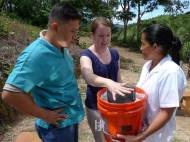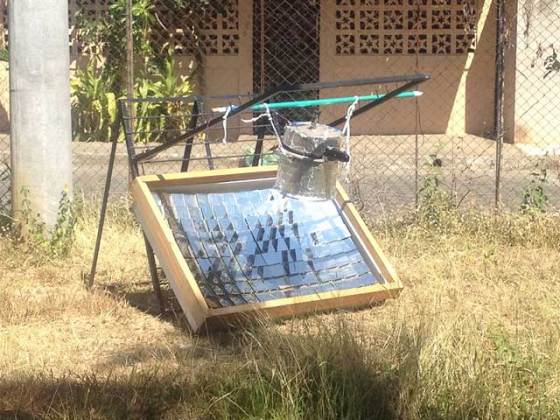SolarClave system employs Sun to sterilize medical equipment
 In Nicaragua, a relatively low number of health centers which serve six million people are currently backed up by around 1,300 “health posts” that provide emergency care, obstetric services and the occasional baby delivery. Most of these posts either lack equipment to sterilize surgical tools and bandages or have kerosene-powered autoclaves, but a team of MIT researchers is running a pilot project where they sterilize medical equipment with sunlight.
In Nicaragua, a relatively low number of health centers which serve six million people are currently backed up by around 1,300 “health posts” that provide emergency care, obstetric services and the occasional baby delivery. Most of these posts either lack equipment to sterilize surgical tools and bandages or have kerosene-powered autoclaves, but a team of MIT researchers is running a pilot project where they sterilize medical equipment with sunlight.
Little Devices group, part of the MIT’s D-Lab series of classes, workshops and labs, took 3 years to develop SolarClave – a solar-powered autoclave that can be built and repaired using locally available parts and materials. The device is more affordable compared to existing kerosene or electric sterilizers and it doesn’t require fuel to be powered.
An early prototype relied on foil-covered parabolic reflector to heat a boiler with tubing that carried steam to a sterilizing vessel several feet away. Feedback from users at the health posts in Nicaragua revealed that the foil was vulnerable to damage and hard to replace with locally available materials, and the tubing that carried the steam was prone to leakage and damage.
The group decided to simplify the design in order to create a SolarClave device that is less prone to failure and more easily repaired with locally available materials. The tubing system was replaced by an ordinary pressure cooker which would be filled with the tools and materials which are being sterilized. The pressure cooker is suspended directly over the reflector, which has been introduced instead the foil. The reflector is now an array of small pocket mirrors, which are readily available in Nicaragua and easily replaceable in case one of them brakes.
Under a clear sky, the system takes 45 to 60 minutes to heat the pressure cooker to the temperature of 121°C (250°F) required by sterilization standards set by the U.S. Centers for Disease Control. After reaching the desired temperature, SolarClave needs 20 minutes to carry out the sterilization. According to data about sterilization use, a typical village health post would run the device through this cycle about three times a week.
The new system is currently being used at three test locations in Nicaragua, and the team plans to put several more units in use by this summer. Users will be able to adapt the system based on their own experience with it and on local availability of parts and materials.
Once the devices have been fully tested in Nicaragua, a D-Lab Scale-Ups Fellow and leader of the SolarClave project Anna Young expects the project will expand to other areas in Central America and Africa.
“It will be made using local supply chains, and it is easily repairable and modifiable”, said Young. “We’re looking for local partners, and we’ll be able to license the device to them, and work with them on installation and assembly.”










Anna Young, I am Debbie Cramer with Gifts for the Nations Ministry. Wonderful idea to help sterilize medical equipment with sunlight.
We do quite a bit of work in the remote northern region of Ghana, West Africa where our partners have 10 medical clinics located.
I would like to visit with you more about Solar Clave if you would like to expand into West, Africa.
We currently have a request for a sterilizer in an area where there is no electric, and so I could sure foresee sending one into West Africa and see how it works.
Debbie
Very useful in developing countries.
Dr.A.Jagadeesh Nellore(AP),India
Thank you for your kind words! Please visit us at littledevices.org and get it touch if you would like our team to look into expanding access to other countries! Anna
We support a small Gambian clinic which attempts care for perhaps 10,000 village people. We have been given a good supply of stainless steel instruments but lack any sterilising medium other than boiling water. help, please!